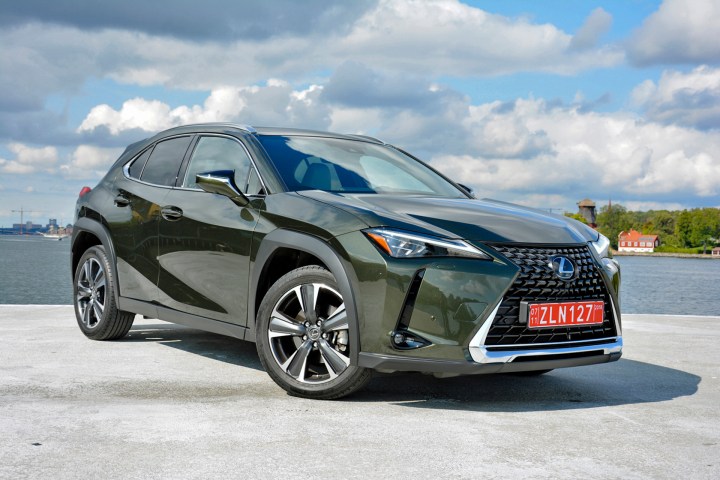
Lexus will follow the path blazed by rival Volvo when it starts a subscription service that lets motorists lease a UX crossover for a two-year period. Called Lexus Complete Lease, the program will launch in four markets across America during the first quarter of 2019, a few short weeks after the US goes on sale.
Motorists in Chicago, Miami, Boston, and Los Angeles will be able to sign up for Lexus Complete Lease. The firm told Digital Trends it’s starting with just four markets to learn what customers like about the program and what they want to see added or removed. The program will likely expand to other markets – and, ultimately, nationwide – after Lexus gathers valuable feedback from the first batch of subscribers.
Every UX regardless of powertrain, color, or configuration is eligible for Complete Lease.
“We talked about starting it nationwide but we wanted to get a sense of how this would play out. Our plan is to test it [in urban areas], and if we’re successful we will look at rolling it out nationally,” Cynthia Tenhouse, Lexus’ general manager of product and consumer marketing, explained.
Lexus designed Complete Lease to give buyers a hassle-free, all-in-one alternative to buying or leasing. It bundles the cost of leasing the car, maintenance (including wear-and-tear items like tires), a number of telematics options (such as a SiriusXM subscription), and, significantly, insurance. The only thing left for motorists to pay for is gasoline. Lexus isn’t ready to reveal the name of its insurance partner. It hasn’t released pricing information, either.
“We’re finalizing the starting price. The focus is on a value message,” Tenhouse told Digital Trends during the launch of the 2019 UX in Stockholm, Sweden.
The fine-print, you ask? Subscribers are locked into the model they choose for the duration of the two-year lease. They will not be able to swap cars regardless of whether they want to step into a different UX or a different Lexus model altogether. The firm hasn’t decided what happens if buyers opt out of the program before the end of the two-year period, or how many miles they’ll be able to cover during that time.

A lot can happen in two years; you can unexpectedly have twins and need a bigger car, or land a sweet new job with a 100-mile commute that puts you over the annual mileage limit. Perhaps the biggest bullet point in the fine-print section, at least at this point, is that a lot hasn’t been decided yet.
The point of the program isn’t to bypass the dealer. Lexus gives motorists the convenient option of configuring their UX online, from the comfort of their own living room or at the nearest brewery, but they still need to place an order at the nearest participating dealer. The firm stresses every UX regardless of powertrain, color, or configuration is eligible for Complete Lease. The price of the package will simply be added to the cost of the car, whether it’s a base model with front-wheel drive or a hybrid with all the bells and whistles.
Tenhouse told Digital Trends Lexus is also considering launching a second, more Netflix-like on-demand program better aligned with the one offered by BMW, among other brands.
“We are studying other subscription, ride-sharing, and car-sharing options as well. This is our first entry.”
Instead of locking motorists into a car for a pre-determined time period, the second program would let users pay a monthly fee to access a wide variety of Lexus vehicles. The type of car available would likely depend on how much users pay. BMW divided its car-sharing program into three tiers, for example.
One thing is certain: Lexus’ first step in the world of car-sharing won’t be its last.
“We are studying other subscription, ride-sharing, and car-sharing options as well. This is our first entry,” Tenhouse hinted. She stopped short of revealing what else Lexus is looking at. And, while only UX customers will be eligible to sign up for Lexus Complete Lease when the program launches, there’s a strong chance it will become available on other models in the coming months or years.
“We will expand it,” affirmed Tenhouse. When and in which direction will largely depend on how buyers respond to the idea of selecting a car like they choose a smartphone.



